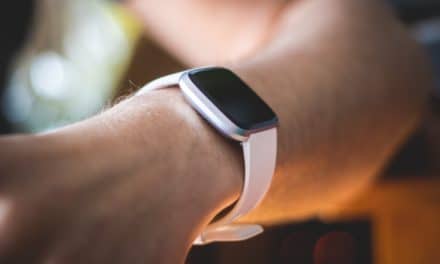[ad_1]
A FitBit is one of several brands of health monitor currently available that are marketed as a means of improving your health. To be fair, no specific health claims are made, but improving cardiovascular health, and thereby reducing hypertension, is a unique selling proposition for this type of device. Does my FitBit live up to this claim?
I was given a FitBit as a gift and prior to receiving it I had not thought about such devices. I quickly discovered that to even use it I had to upgrade my smart phone to one that uses the latest generation of operating system as the device records and displays data on a smart phone App.
The second thing to understand about this type of fitness monitor is that it only records and displays data. What is crucial is how you use it. How it is set up also influences the results it produces. The tabloid press recently carried a story of a grandmother, who had been given this type of device, had clocked up tens of thousands of steps each day even though she had not left her sofa. It turned out that she was knitting clothes for her grandchildren and the device incorrectly interpreted her movements as walking!
I am right-handed and usually wear a wristwatch on my left arm. I started out wearing my FitBit on my right arm and it was set up accordingly. It soon became apparent that it too was incorrectly interpreting my arm movements and was counting them as if I was walking. Wearing the device on my left arm and adjusting the settings gave much more accurate data.
The above anecdotes demonstrate that it is the type of exercise that you take which is important. Brisk walking or jogging for 30 to 45 minutes each day has been shown to lower high blood pressure by up to 10% and that the benefits last for about 23 hours. That is why exercising each day is an important way of reducing hypertension. The important thing is that your heart rate must be elevated for a period of at least 30 minutes in order to obtain the benefit.
The type of health monitor I have counts the number of steps I take in a 24 hour period. It also works out how many minutes exercise I have taken, how far I have walked, and how many calories I have used. The more steps taken in a given time results in more calories being burned.
All interesting stuff, but does using this type of device help lower high blood pressure? The answer is that it depends on how you use it. To get the most out of it and to lower your high blood pressure, you need an exercise plan and to use the device to monitor your progress.
My exercise plan is simple. My goal is to take not less than 10,000 steps each day (about 5 miles) of which 3 miles is to be taken in one concerted 45 minute session of brisk walking. The remainder is made up by shorter periods of exercise.
Where does my health monitor fit into my plan? I have a goal and an exercise plan. The monitor tracks my progress in achieving my goal and lets me know if I am on track or have fallen behind. In short, it motivates me to achieve my goal. The App does this by a series of motivational messages displayed on the device and nudging me if I have been inactive for an hour, and providing weekly progress reports.
Can a FitBit (or similar device) really help reduce high blood pressure? Yes it can if used correctly and in conjunction with a suitable exercise plan.
[ad_2]
Source by Robert Reddin







